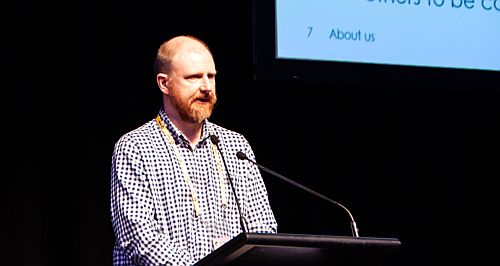Make / Model Search
News - General News - FleetCEFC looks ahead to ZEV transitionGovernment’s Clean Energy Finance Corporation shares zero-emission vehicle outlook29 Mar 2023 THE Clean Energy Finance Corporation (CEFC) offered an in-depth look at Australia’s zero-emission vehicle transition at the Institute of Public Works Engineering Australasia (IPWEA) Australasian Fleet Conference in Brisbane this week.
The Australian government-owned CEFC was founded a decade ago, in 2013, and is responsible for investing $10 billion in green initiatives to accelerate the transition to net zero by 2050.
Executive director and head of debt markets at the CEFC, Richard Lovell presented at this year’s IPWEA Fleet Conference where he discussed ‘financing the transition to zero emission vehicles’.
“The purpose of the CEFC is to facilitate the flow of funds into the clean energy sector,” said Mr Lovell.
“There's really three sections broadly speaking, there's renewable energy, there's energy efficiency, and there's law emissions technologies.
“Energy efficiency and low emissions technologies includes really a lot of the things that will be financed inside fleets in Australia today, as we transition towards net zero.”
Mr Lovell shared the current barriers and opportunities presented for electric vehicles right now, with a focus on the fleet market.
He said the first barrier for both operating and wholesale lease financing structures is a lack of second-hand sales data, leading to conservative value settings.
“It just exacerbates the already acute issue with the cost differential for electric vehicles as opposed to conventional diesel vehicles, and we see that as a major barrier,” he explained.
“Where we’re seeing finance of fleets on a wholesale basis, we do see that conservative assumption around values and end values as driving some constraints for wholesale financing structures.”
While there is a limited understanding of total ownership costs for EVs, Mr Lovell told the audience that this is improving, and that the benefits of running a zero-emission fleet are being realised.
“We do find, and I'm probably preaching to the converted here, that across a lot of users there's a relatively low level of understanding of the inputs that go into the total cost of ownership,” he said.
“I think that's improving pretty rapidly, but we do see that there's an under appreciation of some of the benefits that can arise from adopting zero emissions fleets.”
Mr Lovell confirmed that charging infrastructure is also “quite a significant barrier” in the eyes of the CEFC.
“So, to give you the classic example of a fleet, that might be operating, you know, a relatively modest number of light vehicles, they're looking to try and dip their toe in the water and understand what the charging infrastructure looks like,” he explained.
“It becomes quite challenging, because often you have to solve what the problem would look like for a much bigger percentage of the fleet moving to electric vehicles than you actually intend to do.
“It's not always scalable, so depending on the site that you're operating within, depending on the grid infrastructure that you're operating within, at that point the costs of that charging infrastructure can be disproportionate to the cost of the fleet that you're seeking to change over.”
Improving Australia’s charging infrastructure will require government support, Mr Lovell said, which he expects will come.
“We do expect to see the government at both the federal and state level looking at funding of charging infrastructure, there's various means through which that can be done,” he said.
“You simply can't make money from it because you can't charge enough for the electrons passing from the equipment into the batteries, in order to pay back the capital costs of the kit.
"We’ve seen subscription models, we’ve seen alternate revenue models, and sooner or later some of that will start to pay off. But for the moment, in large part, public charging infrastructure is going to be something for the state governments and entities like some of the motoring associations to address.”
In summing up, Mr Lovell made it clear that the pace of uptake for electric vehicles would need to be “less comfortable than everybody would like”.
“The reality is that the pace of transition, which is going to be required in order to decarbonise the transport sector in the Australian economy as a whole, we expect to see that drive a faster pace of transition that would naturally have occurred if you're simply just adopting some other form of technology,” he concluded.  Read more |
Click to shareGeneral News articlesResearch General News Motor industry news |












Facebook Twitter Instagram